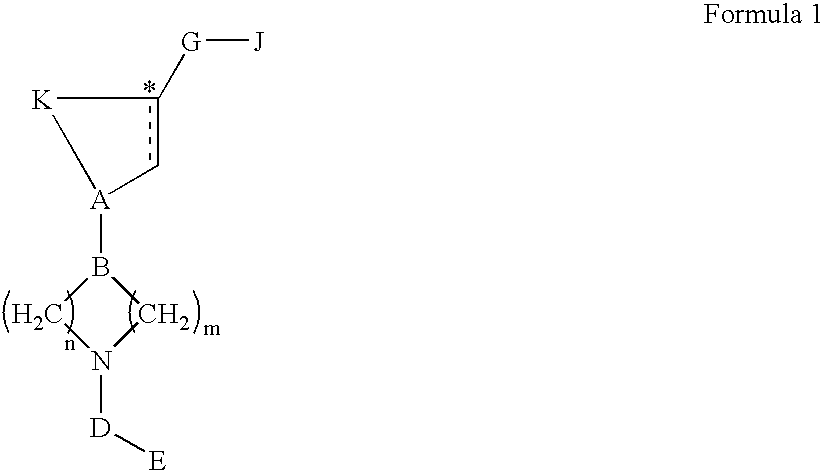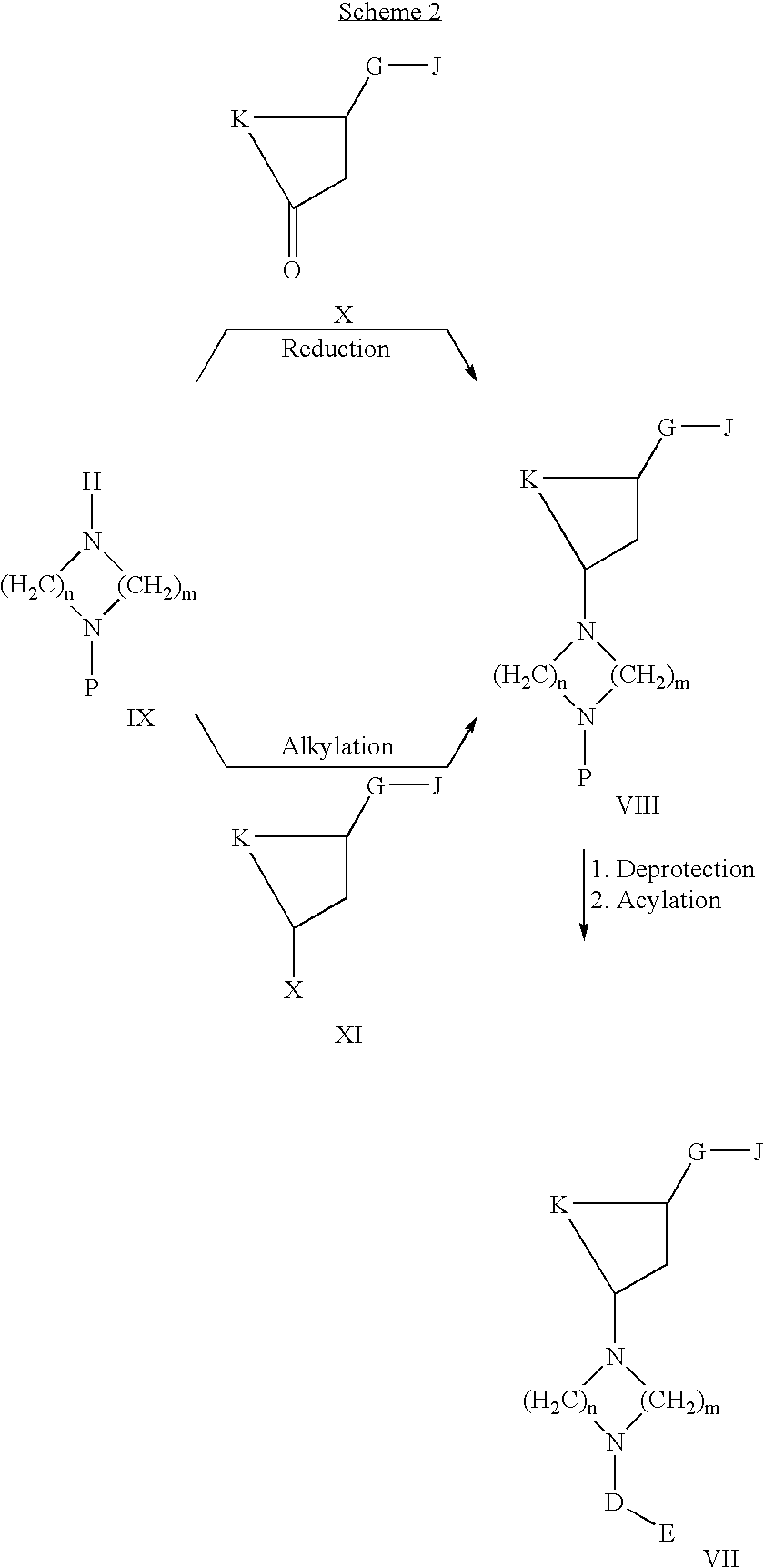Acetyl-CoA carboxylase inhibitors
a technology of acetylcoa and carboxylase, which is applied in the direction of heterocyclic compound active ingredients, drug compositions, and metabolic disorders, can solve the problems of high risk for large segments of western populations, selective loss of body fat, and annual direct medical cost associated with type 2 diabetes
- Summary
- Abstract
- Description
- Claims
- Application Information
AI Technical Summary
Benefits of technology
Problems solved by technology
Method used
Image
Examples
example 1
(3R)-1′-(Anthracene-9-carbonyl)-[1,4′]bipiperidinyl-3-carboxylic acid ethyl ester
[0495]Anthracene-9-carbonyl chloride (62.2 mmol) was suspended in anhydrous dichloromethane (30 mL) and added slowly by pipette to a solution of [1,4′]bipiperidinyl-3-Carboxylic acid ethyl ester bishydrochloride (62.2 mmol) and triethylamine (4 eq., 35 mL) in anhydrous dichloromethane (50 mL) at such a rate that a gentle reflux was maintained. The resulting suspension was stirred overnight at ambient temperature then shaken with ice-cold water containing sodium hydroxide (0.19 mol, 7.6 g). The dichloromethane layer was separated and the aqueous layer was extracted with dichloromethane. The combined dichloromethane solution was washed with water, dried with anhydrous sodium sulfate, diluted with a little xylene and evaporated to dryness to give the title compound (containing a small amount of the corresponding isopropyl ester) as a pale yellow gummy foam (30.8 g).
[0496]MS: 445.4 [M+H]+ (ethyl ester) and ...
example 2
(3R)-1′-[2,6-Bis-(4-chloro-phenyl)-pyridine-4-carbonyl]-[1,4′]bipiperidinyl-3-carboxylic acid ethyl ester
[0497]The title compound was obtained from (3R)-[1,4′]bipiperidinyl-3-Carboxylic acid ethyl ester bishydrochloride by procedures similar to those described above using 2,6-bis-(4-Chloro-phenyl)-isonicotinic acid (P. Blumbergs et al. J. Med. Chem. 1972, 15, 808.)
[0498]MS: 566.0 [M+H]+
example 3
(3R)-1′-[2,6-Diphenyl-pyridine-4-carbonyl]-[1,4′]bipiperidinyl-3-carboxylic acid ethyl ester
[0499]The title compound was obtained from (3R)-[1,4′]bipiperidinyl-3-carboxylic acid ethyl ester bishydrochloride by procedures similar to those described above using 2,6-diphenyl-isonicotinic acid which was prepared according to a procedure analogous to that described by P. Blumbergs et al. J. Med. Chem. 1972, 15, 808.
[0500]MS: 498.1 [M+H]+
PUM
| Property | Measurement | Unit |
|---|---|---|
| temperature | aaaaa | aaaaa |
| temperature | aaaaa | aaaaa |
| temperature | aaaaa | aaaaa |
Abstract
Description
Claims
Application Information
 Login to View More
Login to View More - R&D
- Intellectual Property
- Life Sciences
- Materials
- Tech Scout
- Unparalleled Data Quality
- Higher Quality Content
- 60% Fewer Hallucinations
Browse by: Latest US Patents, China's latest patents, Technical Efficacy Thesaurus, Application Domain, Technology Topic, Popular Technical Reports.
© 2025 PatSnap. All rights reserved.Legal|Privacy policy|Modern Slavery Act Transparency Statement|Sitemap|About US| Contact US: help@patsnap.com



